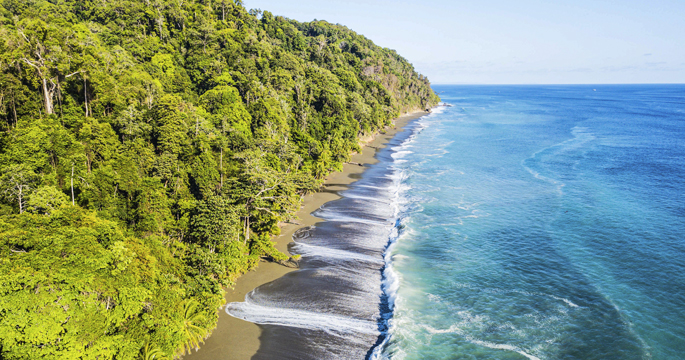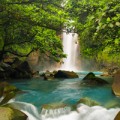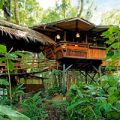From exploring lush rainforests and surfing some of the world’s best breaks, the Osa Peninsula is a magical spot with an abundance of wildlife and natural beauty
Costa Rica’s Osa Peninsula is a world apart. This 35- mile-long isolated landmass stretches southward between the Pacific Ocean and the waters of Golfo Dulce, creating a haven for a bountiful multitude of wildlife. The forests of Osa are home to more than 700 species of trees, earning it the title of the Earth’s most biologically intense ecosystem. In years past, these dense, unsettled forests of the Osa were the exclusive realm of explorers, intrepid gold prospectors, and small bands of indigenous people. Today, the region’s rainforests, surf-washed beaches, and coastal wetlands lure a growing number of eco-adventurers. Here are ten reasons why the Osa Peninsula should be on your list of active travel destinations.
A Walk in The Woods
Roads are few and far between on the Osa Peninsula, and large areas of the forest can be reached only by foot. Enthusiastic trekkers have miles of near-virgin terrain to explore on routes that traverse rivers, skirt swamps, delve into shadowed thickets, and ascend ridges. Among the more challenging routes favored by the fit is a ridge hike known as Calle Las Bonitas, the coastal trek from La Leona to Sirena, or the mountainous Sirena to Los Patos route. Less demanding walks include a quick stroll to the Uvita waterfall, shoreside rambles at Playa Hermosa, following the paths of Piedras Blancas National Park, and explorations of the wooded thickets of the Trillo de la Danta – aka the tapir’s trail. For a fully immersive walk, there are two- and three-day guided treks into the heart of the Corcovado National Park.
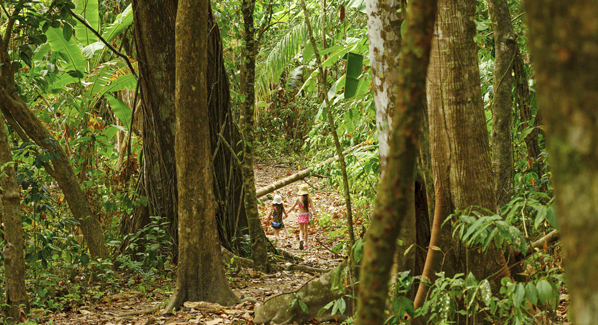
Corcovado National Park offers some of the best and most diverse hiking in Costa Rica. Photo: AscentXmedia/iStock
For The Birds
Ornithologists have identified more than 465 resident and Neotropical migratory bird species in the ecologically diverse wilds of the Osa Peninsula. Avid birders looking to expand their life lists can count their finds across habitats ranging from rainforests and lowland thickets to mangrove swamps, coastal marshes, and undeveloped seashores. More causal avian observers are also rewarded with sightings of signature species such as colorful scarlet macaws, majestic keel-billed toucans, and elegant green ibis. Corcovado National Park and Piedras Blancas National Park are considered prime areas for birding, and the town of Drake Bay is a favorite starting point for guided tours.
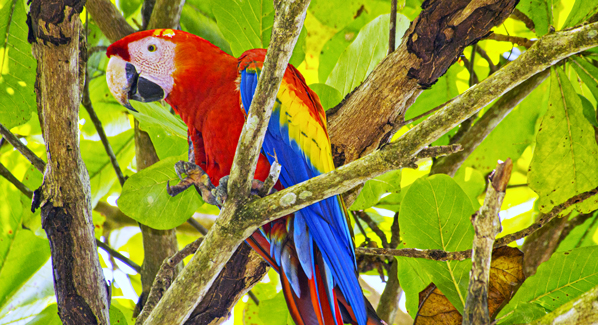
Scarlet macaw in the Osa Conservation Area of Corcovado National Park, home to the largest population of scarlet macaws in Central America. Photo: Al Carrera/iStock
Where The Whales Are
The waters of Osa’s Golfo Dulce are a prime destination for whale watching because it sits at the junction of migratory routes for humpback whales from both the southern and northern hemispheres. From mid- December to mid-March, whales migrate from Alaska to Costa Rica to mate and give birth. Then, from mid- July through October, whales from Antarctica arrive to take their turn. This creates the world’s longest whale- watching season. And while the humpbacks are the star attraction, area waters are also home to or visited by up to 25 different species of whales and a half dozen types of dolphins.
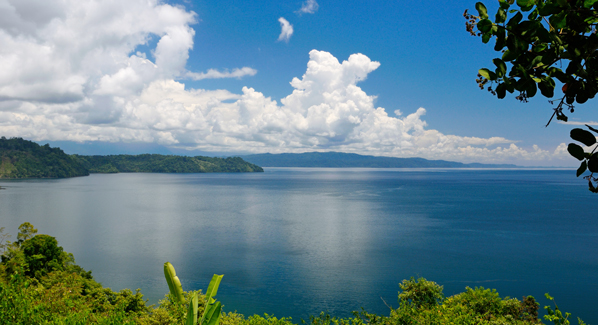
The blue, calm waters of Golfo Dulce at the Osa Peninsula are ideal for whale watching during both the southern and northern hemisphere migrations. Photo: Reimar/Shutterstock
Mangroves And Mysteries
In the heart of the Osa Conservation Area, the tidal flows of the Siepe River nurture Central America’s largest mangrove forest. The mangrove branches are home to Costa Rica’s smallest primate, the titi monkey and more than 100 species of birds roost and wade along the riverbanks. Boa constrictor snakes hunt among tangled mangrove roots, while turtles, crocodiles, and caiman sun themselves on the shoreline. This pristine coastal ecosystem can be explored on half and full-day riverboat tours that pass through the heart of the coastal preserve. Tours may also take in the mysterious Diquís Spheres. These exquisitely crafted stone balls are believed to be the legacy of an unknown pre-Columbian society.
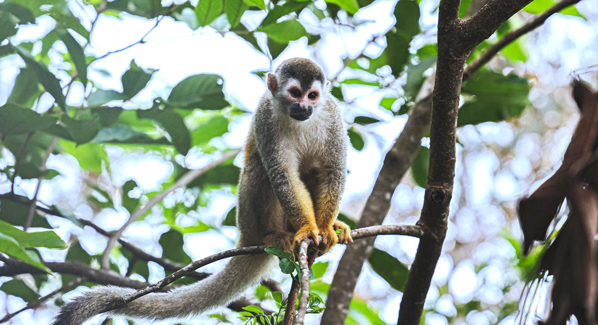
Titi monkeys are the smallest species of monkeys found in the mangrove forests of Costa Rica’s Osa Peninsula. Photo: Diego Maldonado/Shutterstock.
Wet A Line
Golfo Dulce, the tropical fjord formed by the Osa Peninsula, lures sport fishermen from around the world. They wade into river mouths to trick jacks and mackerel. They ride kayaks into the mangroves to lure snook and snapper from hiding places among the roots. They troll rocky headlands in hopes of hooking a trophy roosterfish. And for the ultimate adventure, a fleet of oceangoing sport fishing vessels await those who venture out from the Gulf into the open waters of the Pacific. Here, anglers can tangle with a world-class roster of big game fish, including high-flying sailfish, heavyweight blue and black marlin, athletic tuna and wahoo, and pugnacious mahi-mahi.
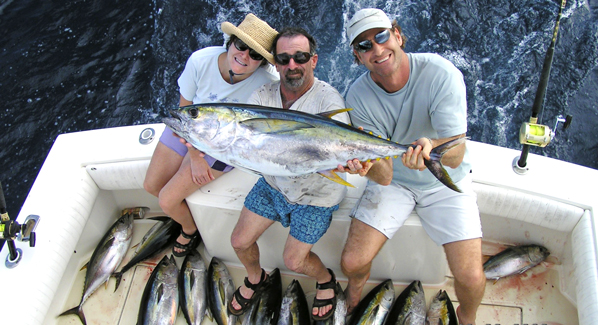
A bountiful tuna catch from one of the fishing outfitters at Bosque del Cabo Rainforest Lodge. Photo: Bosque del Cabo Rainforest Lodge
Visit A Tree Garden
The Osa Arboretum gives visitors a taste of Osa’s wild nature without the need for trailblazing and bushwhacking. This 600-acre botanical preserve was created by the Osa Conservation Foundation to protect and showcase coastal, mangrove, secondary, and old- growth forests that comprise one of the most biologically intense regions on the planet. Visitors can follow a network of trails on guided interpretative tours, ascend a 100-foot tower to view the rainforest canopy, visit hidden waterfalls, engage in educational programs, and join interactive workshops that promote conservation and sustainable development in the Osa Peninsula. More immersive experiences include dining at the preserve farm-to-table restaurant and overnight stays that provide opportunities for more in-depth conversations with resident biologists, botanists, eco- agriculturists, and ecologists.
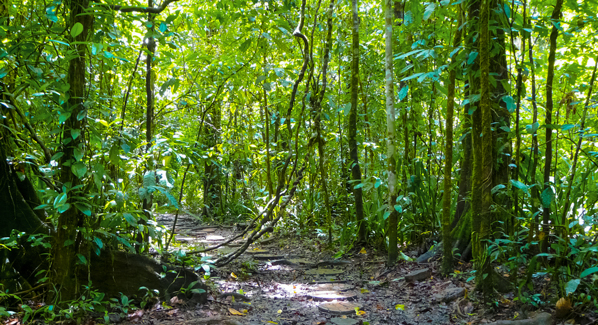
The 7,000 acres at the Osa Conservation Area in the Corcovado National Park include hiking to the waterfalls and a 100-foot canopy tower for viewing nature. Photo: Boivin Nicolas/Shutterstock.
Go Below
Take a deeper dive into the Osa Peninsula with a trip to Isla del Caño. This small island is a biological reserve located some 10 miles off the mainland coast. The island’s deserted beaches are surrounded by some of the most pristine coral reefs in Costa Rica. Waters rich in marine life reward underwater explorers with 200 species of colorful tropical fish, sea turtles, rays, and a chance to see passing whale sharks. The island can be reached by boat from the village of Drake Bay, and there are a number of tour operators catering to snorkelers and scuba divers. On the one-hour boat ride to and from the island, there’s often a chance to see frolicking dolphins and breaching whales.
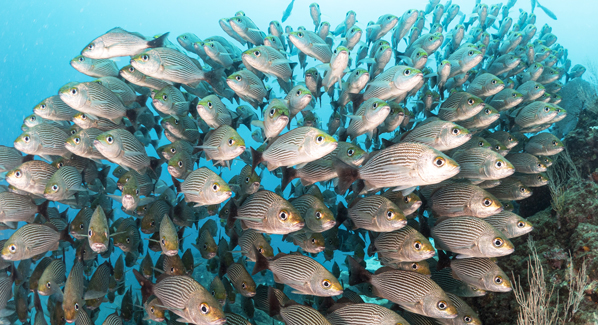
Schooling fish at Cano Island, Costa Rica, where a wide range of tropical fish inhabit the sea, including parrot fish and snapper. Photo: Scupix/Shutterstock
Canopy Flights
Costa Rica is the birthplace of the zipline, but it wasn’t just for thrills. More than half of the wildlife in Costa Rican rainforests lives above the ground. In the 1970s, biologists seeking a non-invasive way to explore the country’s dense forest canopies hit upon the novel idea of taking to the air along a suspended cableway. Today, that tradition continues in the Osa Peninsula, where networks of ziplines raise riders into treetop realms inhabited by monkeys, sloths, and a menagerie of bird life. A unique experience offered by some zipline operators is a night flight through the forest canopy.
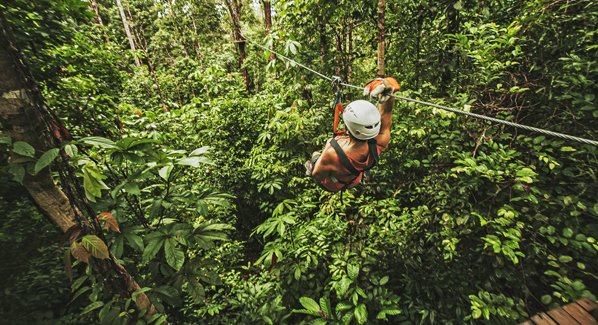
A canopy zip line tour in the Osa Peninsular is one of the activities when staying at El Remanso Rainforest Lodge. Photo: El Remanso Rainforest Lodge
Surf’s Up
Tasty waves, deserted beaches, and cheap lodging have lured generations of surfers to the shores of Costa Rica, and the breaks at Cabo Matapalo and Pavones are legendary in the wave-riding fraternity. But you don’t have to be a stoked 20-something to get in on the action, as the Osa also offers more mellow and even beginner-friendly swells. There are communal surf camps and schools that cater to newbies, mid-range resorts that host recreational riders on holiday, and even some high-end lodges where well-heeled guests can enjoy concierge-style assistance and private lessons as part of a luxury vacation experience.
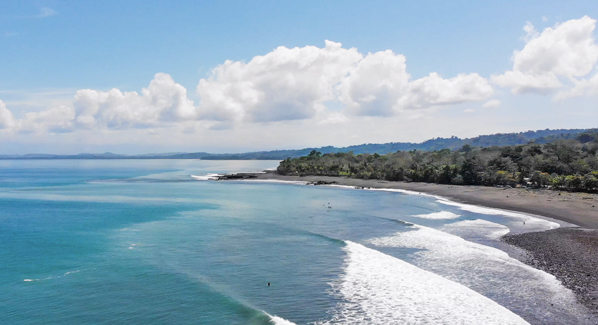
The famous Pavones surf break, the second longest left in the world, is the most consistent between May and September. Photo: Ian McDonnell/iStock
Go For the Gold
In addition to biological riches, the Osa Peninsula has gold. It’s found in the riverbeds, and the Rio Tigre is famous for the high-quality nuggets of near-pure gold along its shores. A gold rush in the early to mid-20th century saw prospectors flocking to the region, creating boom towns and establishing mining operations to the detriment of the forests. Mining operations came to an abrupt halt with the creation of the Corcovado National Park in 1975, and the region is now protected from all forms of intrusive exploitation. Today, the only type of prospecting allowed is artisanal panning for gold dust and nuggets in natural stream beds. Visitors can try their hand at striking it rich on a guided tour that includes lessons in panning.
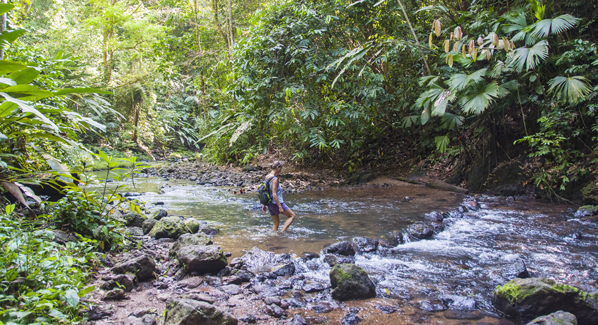
It is not a lucrative prospect, but panning for gold in the rivers of the Osa Peninsula is another way to explore. Photo: Sam Camp/iStock

